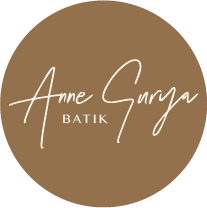
About Batik
Share
Batik is a traditional wax-resist dyeing technique that originated in the island of Java, Indonesia. Here are some facts about batik:
- Batik involves applying wax designs onto fabric, usually cotton, and then dying the fabric. The wax resists the dye, creating intricate patterns.
- The process typically involves repeatedly applying wax, dyeing, and removing the wax to build up complex, multi-colored designs.
- Batik patterns are often inspired by nature, cultural motifs, and daily life in Indonesia. Common batik patterns include flowers, leaves, geometric shapes, and abstract designs.
- Different regions in Indonesia developed their own distinct batik styles and techniques. For example, Yogyakarta and Solo are known for their classical court batiks, while Pekalongan is known for more vibrant, commercial batiks.
- Batik is considered a high art form in Indonesia and is an important part of Indonesian culture and heritage. It is used for clothing, home decor, and other textiles.
- In 2009, UNESCO designated Indonesian batik as a Masterpiece of Oral and Intangible Heritage of Humanity, recognizing its cultural significance.
In summary, batik is a unique textile art form that combines intricate wax-resist dyeing techniques with culturally significant designs and patterns originating from Indonesia.
- Batik involves applying wax designs onto fabric, usually cotton, and then dying the fabric. The wax resists the dye, creating intricate patterns.
- The process typically involves repeatedly applying wax, dyeing, and removing the wax to build up complex, multi-colored designs.
- Batik patterns are often inspired by nature, cultural motifs, and daily life in Indonesia. Common batik patterns include flowers, leaves, geometric shapes, and abstract designs.
- Different regions in Indonesia developed their own distinct batik styles and techniques. For example, Yogyakarta and Solo are known for their classical court batiks, while Pekalongan is known for more vibrant, commercial batiks.
- Batik is considered a high art form in Indonesia and is an important part of Indonesian culture and heritage. It is used for clothing, home decor, and other textiles.
- In 2009, UNESCO designated Indonesian batik as a Masterpiece of Oral and Intangible Heritage of Humanity, recognizing its cultural significance.
In summary, batik is a unique textile art form that combines intricate wax-resist dyeing techniques with culturally significant designs and patterns originating from Indonesia.
